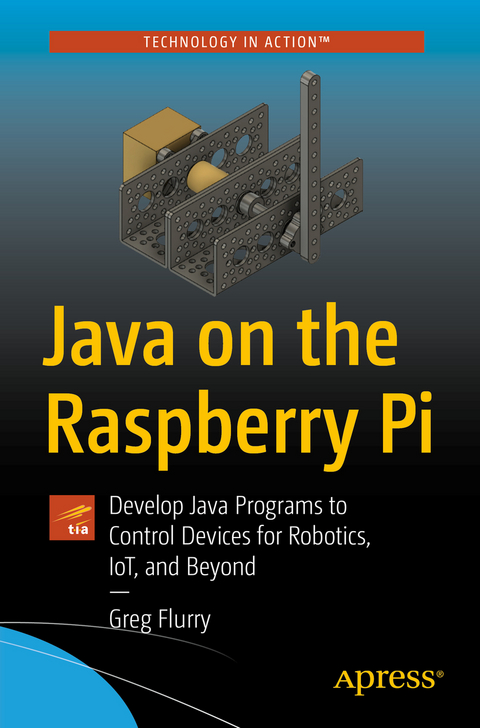
Java on the Raspberry Pi
Apress (Verlag)
978-1-4842-7263-3 (ISBN)
You'll review some limitations on using Java imposed by the Raspberry Pi and Raspberry Pi OS, and even Java itself, and examine which ones might apply to your projects and your devices. You'll also explore solutions to address the limitations and l look at efficient development of Java for the Raspberry Pi.
Java on the Raspberry Pi shows how to interact with a range of devices useful in robotics and IOT, overcoming the hurdles in doing so. It also covers off-loading work from the Raspberry Pi to an Arduino, leveraging its close-to-real time capabilities.
WhatYou'll Learn
Develop with Java remotely using NetBeans
Leverage available libraries to enable device interaction, and what to do if they don’t work
Implement multi-processing, using an Arduino as a co-processor
Build sophisticated projects with multiple threads of execution, multiple processes, and even multiple systems
Who This Book Is For
Experienced programmers who appreciate the benefits of Java and world class tools for application development and want to build robotics or IOT projects using the low cost, low power, and portability of the Raspberry Pi.
Greg Flurry has worked as a programmer and electronics engineer for IBM. In the span of a 40-year career, his roles have included product development, product architecture, research, and client services. He achieved the title of IBM Distinguished Engineer. Greg has authored over 50 articles in IBM and non-IBM publications on topics ranging from simple programming examples to large scale system architectures. He is an inventor, with over 30 patents. He started programming in Java from the time it became public in 1996, and over time, wrote thousands of lines of Java code. After retirement in 2013, he started working with the Raspberry Pi, with the goal of using it as the brain in autonomous robots. As the robots became more complex, he longed for Java and professional development tools. In 2017, he began using Java on the Raspberry Pi and has done so since, educating himself on the techniques of connecting sundry devices to the Raspberry Pi via Java, as well as identifying techniques useful in building moderately complex robotics systems.
Chapter 1: Motivations.- Chapter 2: Raspberry Pi. 3 Model B+ Setup- Chapter 3: Raspberry Pi Zero W Setup.- Chapter 4: Setup the Workstation.- Chapter 5: Remote Java Development with NetBeans.- Chapter 6: Device Support in Java.- Chapter 7: The diozero Base I/O API.- Chapter 8: A DC Motor Controller.- Chapter 9: An Inertial Measurement Unit.- Chapter 10: A Lidar Unit.- Chapter 11: An Environmental Sensor.- Chapter 12: An Analog to Digital Converter.- Chapter 13: A Stepper Motor Driver.- Chapter 14: A Project.- Appendix 1: Arduino Command Center.- Appendix 2: Custom Lidar Unit.- Appendix 3: NetBeans and Mavin.
| Erscheinungsdatum | 04.10.2021 |
|---|---|
| Zusatzinfo | 126 Illustrations, black and white; XXI, 558 p. 126 illus. |
| Verlagsort | Berkley |
| Sprache | englisch |
| Maße | 155 x 235 mm |
| Themenwelt | Informatik ► Weitere Themen ► Hardware |
| Schlagworte | Arduino • GPIO • I2C • IMU • IOT • Java • NetBeans • Pi4J • Raspberry Pi • Remote Development • Robotics • USB • WiFi |
| ISBN-10 | 1-4842-7263-3 / 1484272633 |
| ISBN-13 | 978-1-4842-7263-3 / 9781484272633 |
| Zustand | Neuware |
| Haben Sie eine Frage zum Produkt? |
aus dem Bereich


